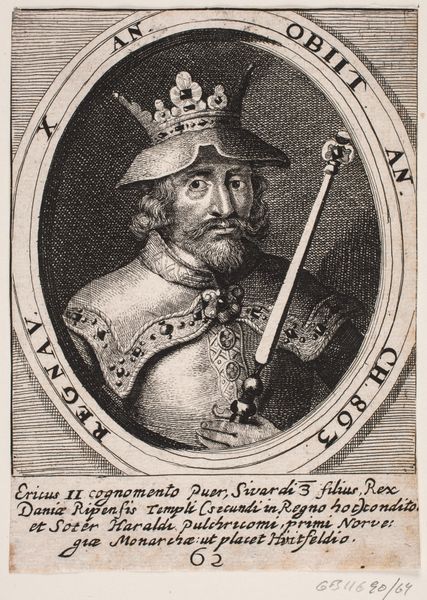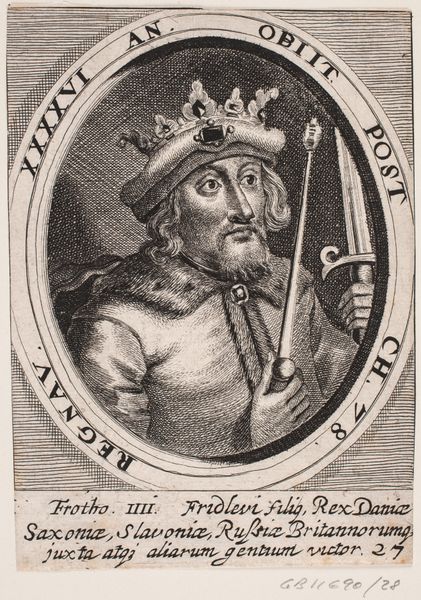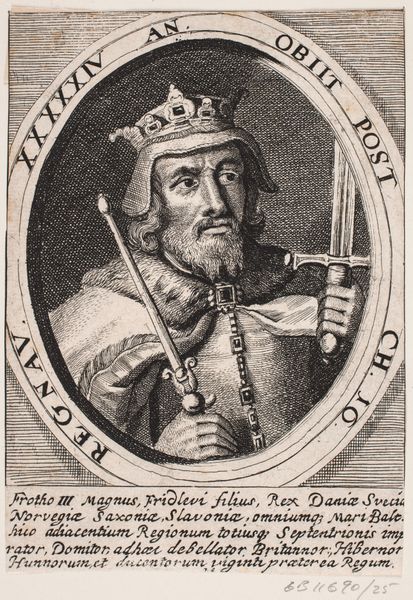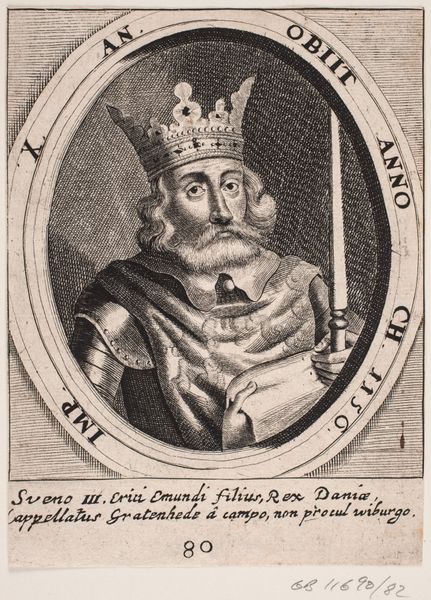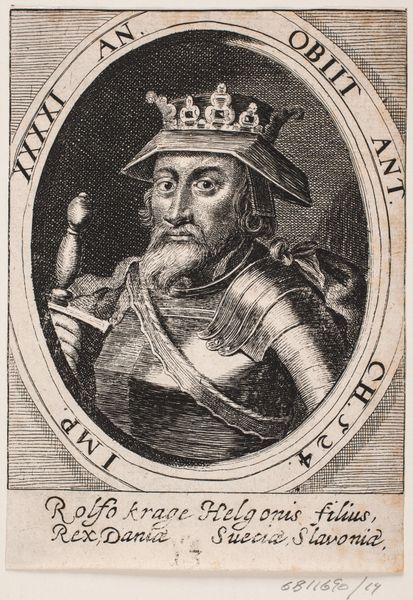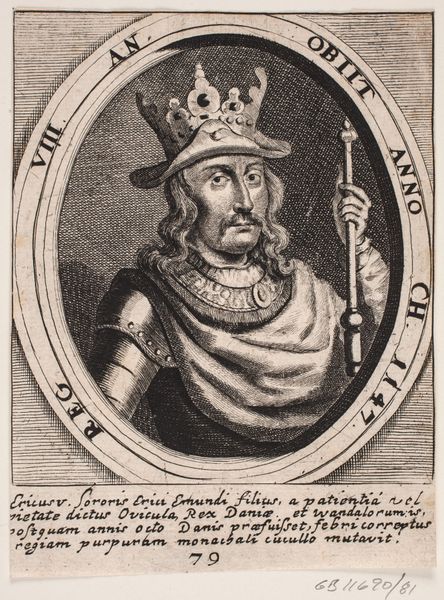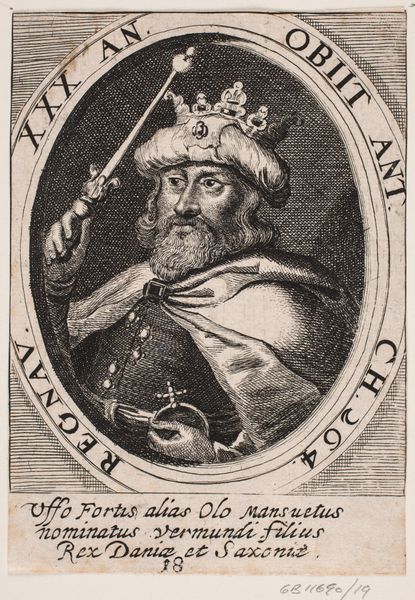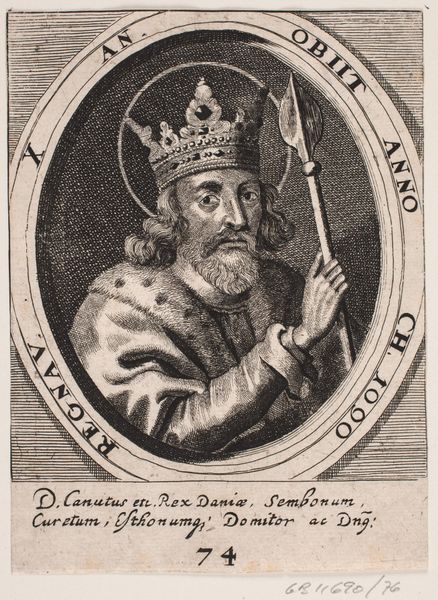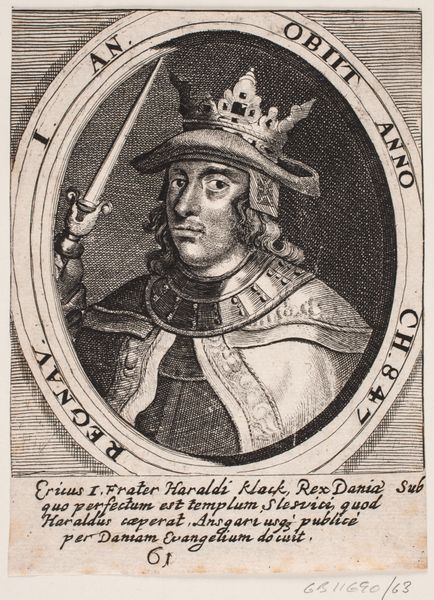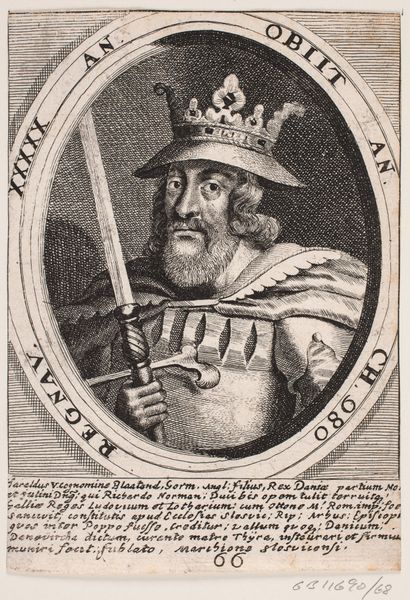
print, engraving
#
portrait
#
baroque
# print
#
portrait drawing
#
history-painting
#
engraving
Dimensions: 140 mm (height) x 100 mm (width) (bladmaal)
Curator: Welcome. Before us hangs a print dating from 1646, entitled "Kong Ømund." Its authorship is listed as anonymous. It’s currently held at the Statens Museum for Kunst. Editor: My first impression? I'd say it's like peering through a very serious looking keyhole into someone’s very serious past! There’s this air of stiff royalty about it. Curator: Precisely. Notice the intricate use of line engraving. The density of the marks creates the tonal range, giving weight to the figure and his regalia. It exemplifies baroque aesthetics, using high contrast to suggest dramatic illumination and heightened realism. Editor: All those tiny lines must have taken ages! What strikes me is the sitter’s slightly world-weary expression. His eyes hold some hidden story… or maybe he’s just tired of posing! And that hat, it seems almost too big for him. Curator: Its size would be emblematic, a visual signifier intended to broadcast status and power. Note the way he holds the scepter and orb, symbols laden with meaning that communicate legitimacy and dominion. Editor: I do wonder about that phrase "Rex Dania et Slavonia" beneath his portrait in the printed text. I mean, what’s the connection there? Is this individual rooted more in history or myth? Did this Ømund really lord over those lands, or are we gazing at some romantic ideal? Curator: Historical portraiture of this era sought to codify identities and often played with allegorical enhancements of their subjects' legacies. He might never have literally ruled, but he embodies that power visually, a cultural ideal preserved. Editor: In a way, this anonymous print becomes its own kind of relic. We see hints of an old king in sharp strokes – now gone but captured on a small, rectangular frame that travels far beyond his time. Makes me a little wistful, thinking of him and the other kingdoms in stories and books! Curator: Agreed. The encoding within its visual language gives us clues that are open to historical and semiotic interpretation. Its presence offers insight into ways societies have memorialized figures throughout time, the material and artistic structures.
Comments
No comments
Be the first to comment and join the conversation on the ultimate creative platform.
